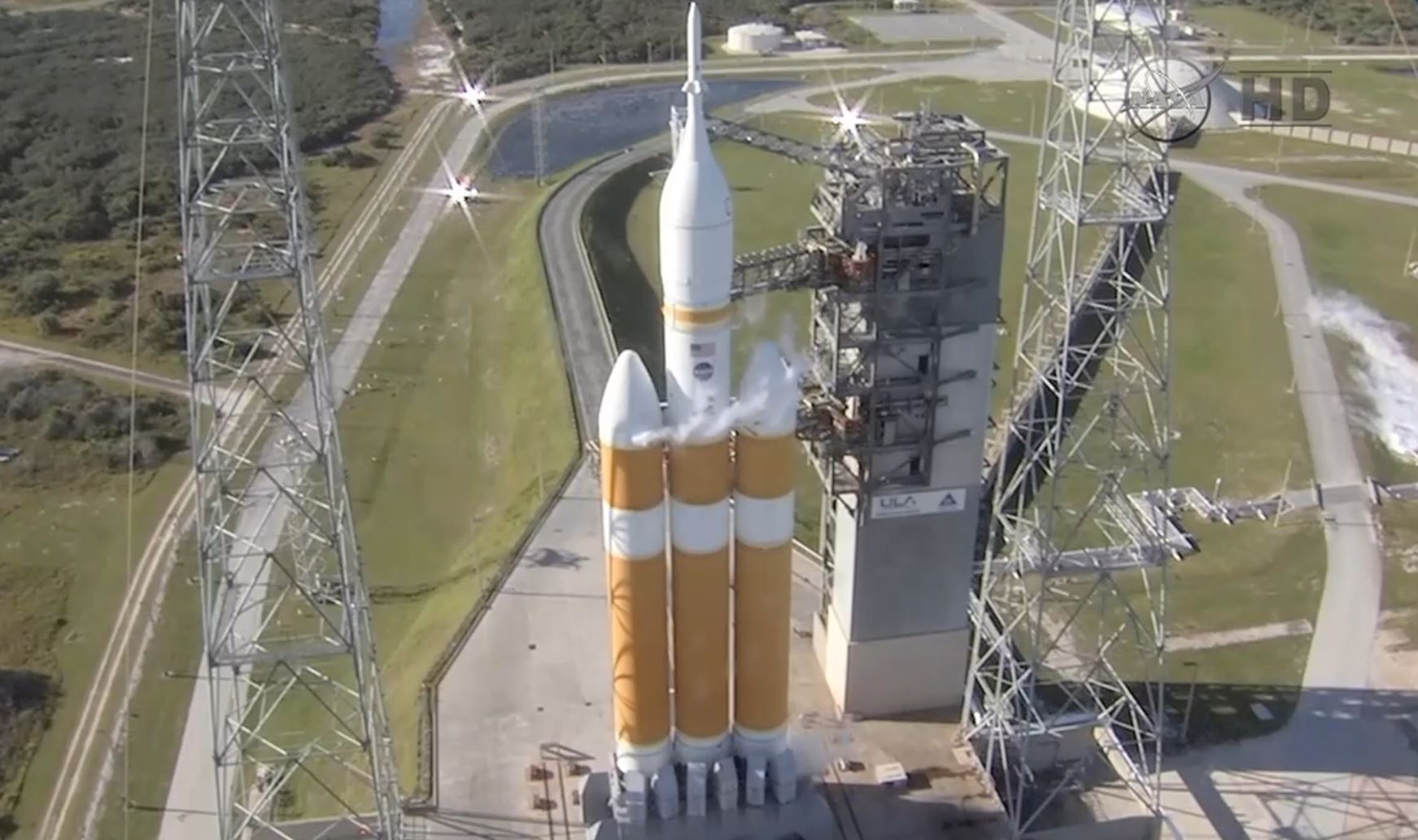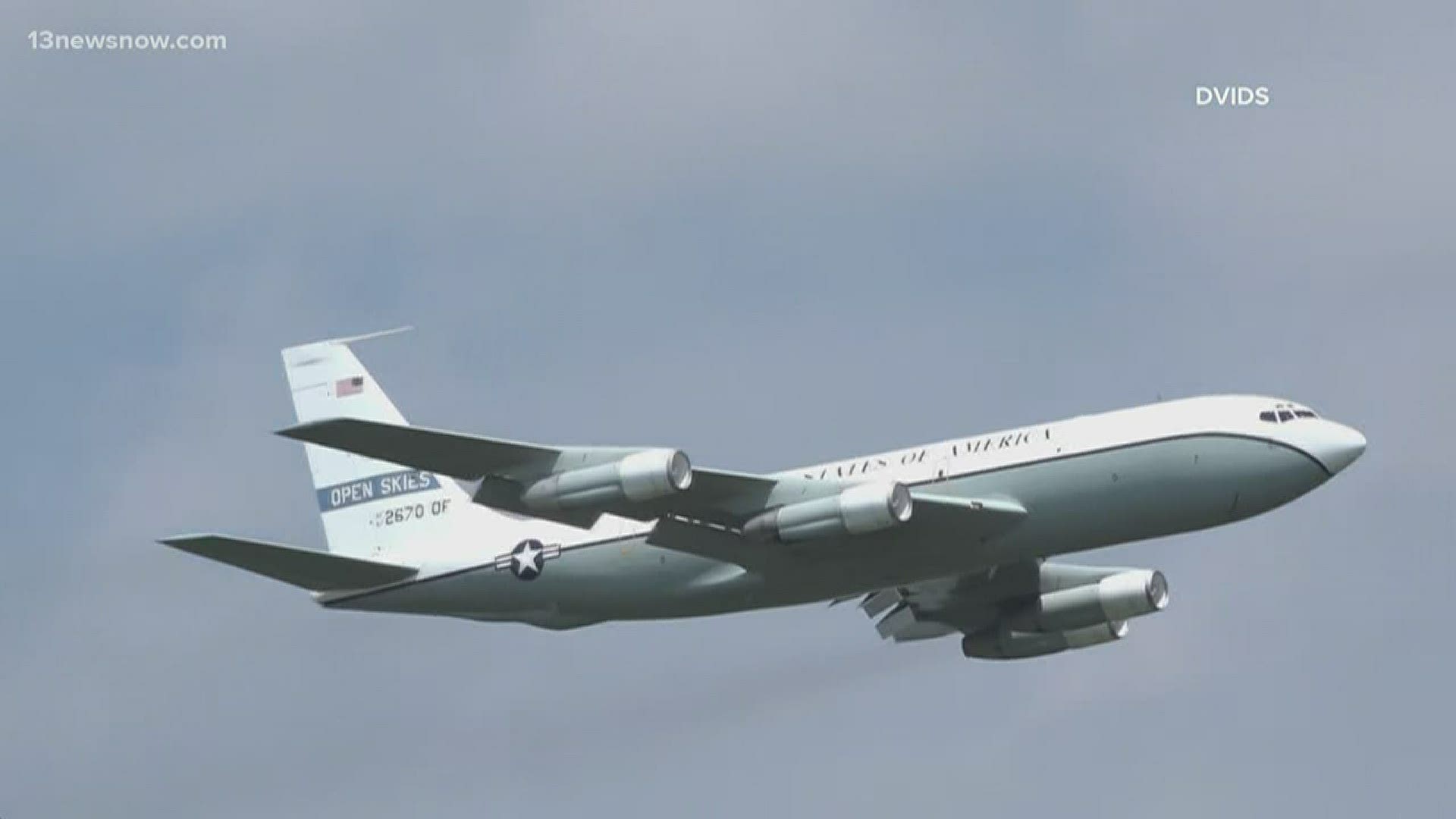CAPE CANAVERAL, Fla. — A new chapter in American space exploration opened Friday as NASA's new space capsule blasted off atop a Delta IV Heavy rocket from its ocean-side launchpad at Cape Canaveral Air Force Station.
The unmanned Orion capsule was lofted into space at 7:05 a.m., the opening of the launch window on NASA's second attempt to launch what NASA chief Charles Bolden called the agency's "prima ballerina."
Thursday,the first attempt scrubbed after a host of issues: a boat strayed into restricted waters near the launch site, high winds and a valve problem left engineers troubleshooting as the launch window ran out.
But Friday, all came together — the weather cooperated, and engineers worked no issues on the very smooth launch countdown.
"This is the prima ballerina on top of this incredible monster, the Delta IV Heavy," Bolden said of Orion. "The way she's going to turn and twist and do stuff ... To engineers it's going to be so graceful and beautiful."
![Liftoff Orion 39;s flight test launches a critical step on our JourneytoMars [ID=19938405]](https://presto-wvec.gannettdigital.com/Portals/_default/Skins/PrestoLegacy/CommonCss/images/smartembed.png)
Orion is a larger version of an Apollo capsule that NASA is developing to fly astronauts to an asteroid by the 2020s, and potentially Mars by the 2030s.
Crews won't climb on board before 2021, after a second unmanned test planned in 2018.
The $375 million Exploration Flight Test-1 mission is primarily a test of the Orion crew module's heat shield, flight computers, and parachutes.
LIVE BLOG: NASA's Orion test flight rocket launch
The flight aims to loft Orion 3,600 miles high on its second orbit, setting up a 20,000-mph re-entry through the atmosphere and splashdown in the Pacific Ocean, four-and-a-half hours after the launch from Florida.
On Thursday, a mostly quiet countdown ran into trouble late.
![NASA's Orion spacecraft launch stalled[ID=19938067] ID=19938067](https://presto-wvec.gannettdigital.com/Portals/_default/Skins/PrestoLegacy/CommonCss/images/smartembed.png)
A boat — possibly a cargo ship, according to ULA — briefly strayed into the launch danger zone in the Atlantic Ocean, preventing an on-time liftoff.
Strong winds then twice halted countdowns a few minutes before planned launch times.
Finally, liquid hydrogen valves in two of the Delta IV Heavy rocket's three boosters failed to close properly, stopping short a third try before 8:30 a.m. The issue couldn't be fixed before the window closed at 9:44 a.m.
Dan Collins, ULA chief operating officer, said the valves got "cold and a little sluggish" more than an hour into the launch window, an issue seen on a previous launch by the same type of rocket.
Even though the rocket and Orion together weigh 1.6 million pounds, strong or gusting winds can still push the rocket and cause it to drift as it rises slowly from its Launch Complex 37 pad.


